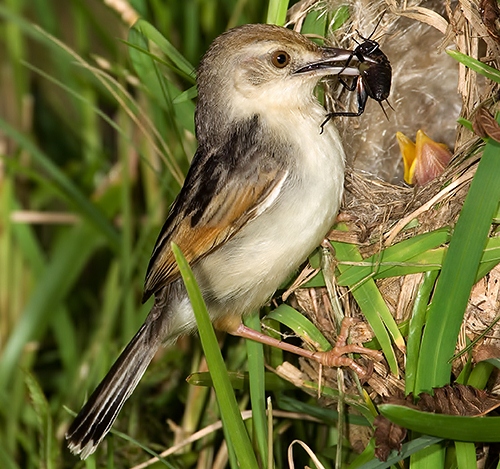 |
| Photo by Hugh Chittenden (Bird Info) |
Common name:
winding cisticola (en); fuinha-de-dorso-preto (pt); cisticole roussâtre (fr); buitrón musical (es); schwarzrücken-cistensänger (de)
Taxonomy:
Order Passeriformes
Family Cisticolidae
Range:
This African species is found from Senegal to Sudan and Ethiopia and south to Angola, northern Namibia and Botswana, Mozambique and north-eastern South Africa.
Size:
These birds are 11-15 cm long and weigh 10-15 g.
Habitat:
Winding cisticolas are mostly found in marshes, bogs, swamps and seasonally flooded grasslands, but also occur in scrublands, dry savannas, plantations and arable land.
Diet:
They are insectivorous, mostly taking crickets, grasshoppers, beetles and caterpillars. They are also known to eat seeds.
Breeding:
The winding cisticola breeds in September-February. They are monogamous and territorial, nesting in an oval or ball shaped structure with a side entrance, woven with dry grasses and living grass blades. The nest is lined with plant down and grass inflorescences and placed in a marsh near the water surface, amongst grass or reeds up to about 1,2 m above the ground. The female lays 2-4 eggs which are incubated for 12-19 days. The chicks are fed by both parents and fledge 14-17 days after hatching.
Conservation:
IUCN status – LC (Least Concern)
This species has a very large breeding range and is described as locally common. The population is suspected to be stable in the absence of evidence for any declines or substantial threats.







